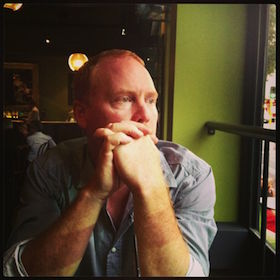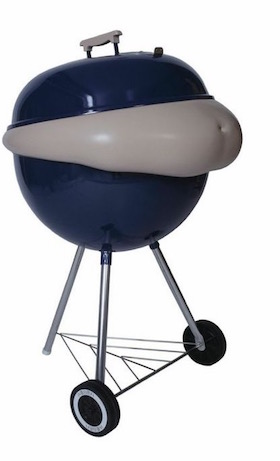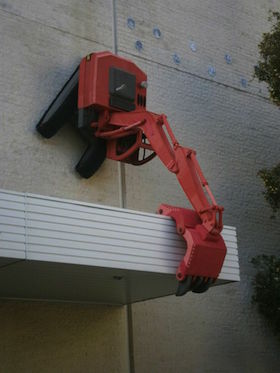 Mining or undermining? Fun Park of Art
Mining or undermining? Fun Park of Art
Paul Caporn by Ricky Arnold
At school there really was no choice in what Paul Caporn would make his career. A self-proclaimed naughty student with a suspicion of authority, his rewards came for his ability in art, winning the high school prize for a self portrait which the school acquired. Whilst his observation and technical skill was proficient, for Paul, art was always about the ‘idea’. His approach always explored opportunity for comment, mostly in fun and jest, to make people think about the work and the material relationship to meaning. The high school portrait conveyed small blasts of anger, hidden in the beautifully executed work.
Paul abandoned his first effort to gain a Fine Arts degree at Curtin University in 1989 to travel to Europe. This was a time of great socio-political shifts with the fall of the Berlin Wall and the beginnings of turmoil that led to the siege of Sarajevo. Paul’s own experiences on these travels led to the realisation that the world was far less straightforward than life in Perth had been.
For Paul, the early 90s brought video games and new virtual reality frontiers. He renewed his commitment to studies back at Curtin University, exploring painting and animation.
“It was the start of self-directed learning,” Paul says. “It was a transition time in how to learn. It was the early days of ‘idea-based’ investigation.”
This suited Paul well. Whilst he isn’t so fond of his graduation work, it does show early leanings towards a later propensity to make art from the very objects that are used in the art industry for exhibition installation and auction. Although he produced competent paintings, he made his installation a two-storey maze for the audience to negotiate to get to the works.
 Paul says his early experimentation periods were greatly assisted by access to affordable studio spaces, artist run initiatives such as the Lab in Subiaco, and smaller exhibition spaces such as the Artshouse Gallery run by Artrage. He deliberately avoided the main space exhibition opportunities in town, preferring to exhibit under his own control or in a collective.
Paul says his early experimentation periods were greatly assisted by access to affordable studio spaces, artist run initiatives such as the Lab in Subiaco, and smaller exhibition spaces such as the Artshouse Gallery run by Artrage. He deliberately avoided the main space exhibition opportunities in town, preferring to exhibit under his own control or in a collective.
Paul experienced different exploratory phases through these times, in keeping with his dislike of being tied down to one form of expression. His interest in the power of the pixel led to a series of new works exploring light, and he rose to prominence through an exhibition at Perth Institute of Contemporary Art titled Glow in 1999, where he exhibited a dadaa-ist ready-made iron with a neon light emitting a glow from the word ‘hot’. A series of custom made lamps ensued. Knowing the difficulties of selling sculpture, Paul subverted the domestic market with functional art pieces that lit people’s homes. Once the lightbulbs on these pieces were extinguished, the sculpture remained.
Paul came more to the public eye when he won Sculpture by the Sea in 2012. His ambitious foam sheet based constructions of mining vehicles took his subversive approach to a new scale.
Although this public success was already on the cards. His Honours project work toured Australia through an Art on the Move touring program and he has been included in survey shows at the Art Gallery of Western Australia.
 Interestingly, Paul’s 2014 residency in Basel through Artsource fell in the 25th anniversary year of his first visit to Europe and the new work arising from it investigates some of the amazing exhibits he encountered in intriguing museums.
Interestingly, Paul’s 2014 residency in Basel through Artsource fell in the 25th anniversary year of his first visit to Europe and the new work arising from it investigates some of the amazing exhibits he encountered in intriguing museums.
“There has been a notion around for some time that art galleries and museums are the theme parks of the cultural elite or the new churches for a secular society”, Paul says.
With this idea, he is off exploring new work around the fun parks and fairgrounds of the nineteenth century.
Is the art world a ‘merry-go-round'?
Ricky Arnold is a freelance curator and arts consultant based in Perth, Western Australia. He has twenty years experience ranging from conducting community cultural development and public art projects to strategic arts planning and funding.
To view more of Paul's work and read about his practice and career, see his page in the Artsource Gallery here.